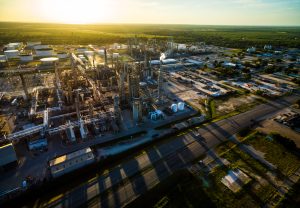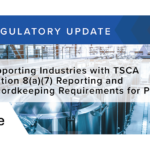
Phase 2 Environmental Site Assessments (ESAs) play a vital role in ensuring the safety and sustainability of real estate development projects in Oklahoma City. This article will explore the purpose and key components of Phase 2 assessments, the role of environmental professionals in the process, the impact of assessments on real estate transactions, common environmental concerns in the city, and steps for moving forward after completing a Phase 2 assessment.
Understanding Phase 2 Environmental Site Assessments
Before delving into the specifics, it is crucial to grasp the purpose of Phase 2 assessments. These assessments are conducted to identify potential environmental contaminants in soil, groundwater, and other media at a given site. The objective is to evaluate the extent of contamination and its potential impacts on human health and the environment.
The Purpose of Phase 2 Assessments
Phase 2 assessments are typically performed following the completion of a Phase 1 ESA. While Phase 1 assessments focus on identifying potential environmental concerns and historical uses of a site, Phase 2 assessments involve collecting samples and analyzing them for hazardous substances.
The primary goals of Phase 2 assessments are:
- To determine if contamination exists at the site.
- To identify the nature and extent of the contamination.
- To evaluate potential risks to human health and the environment.
Key Components of the Assessment Process
Phase 2 assessments are typically carried out in various stages. The process involves:
- Gathering data: Environmental professionals collect site-specific information, such as historical records, soil types, groundwater characteristics, and nearby land uses. This data helps in targeting sampling locations.
- Sampling and analysis: Environmental samples, such as soil, groundwater, and indoor air, are collected from strategically chosen locations. These samples are then analyzed in accredited laboratories to detect the presence and concentration of contaminants.
- Interpretation of findings: Environmental professionals interpret the laboratory results and compare them with regulatory standards and guidelines. This assessment helps in identifying potential risks and areas that require remediation, if necessary.
- Reporting and recommendations: Based on the assessment findings, a detailed report is prepared, including the site’s environmental conditions, potential risks, and recommendations for further action, such as remediation strategies or long-term monitoring.
The Role of Environmental Professionals in Oklahoma City
Environmental professionals play a crucial role in conducting Phase 2 assessments in Oklahoma City. Their qualifications, expertise, and knowledge of local environmental regulations are instrumental in ensuring accurate and precise assessments.
Qualifications and Responsibilities of Environmental Professionals
Environmental professionals involved in Phase 2 assessments possess specialized knowledge and qualifications in environmental sciences, geology, or engineering. They are well-versed in the regulatory frameworks and standards governing environmental investigations.
The responsibilities of these professionals include:
- Conducting site visits and gathering relevant site-specific data.
- Developing sampling plans and collecting environmental samples.
- Overseeing laboratory analysis and interpreting results.
- Preparing comprehensive reports with assessment findings and recommendations.
- Assisting clients in understanding the assessment results and appropriate next steps.
The Importance of Local Expertise
In Oklahoma City, where environmental conditions and regulations can vary, local expertise is invaluable during Phase 2 assessments. Environmental professionals with experience working in the city are familiar with regional geology, potential sources of contamination, and local regulatory requirements.
Local experts are well-equipped to identify and address site-specific challenges efficiently, facilitating a more accurate assessment and ensuring compliance with applicable regulations.
The Impact of Phase 2 Assessments on Real Estate Transactions
Phase 2 assessments have significant implications for real estate transactions in Oklahoma City. Buyers and sellers must consider the potential environmental risks associated with a property before finalizing a transaction.
Risk Management for Buyers and Sellers
For buyers, a Phase 2 assessment provides essential information about the environmental conditions of a property. Understanding potential risks allows buyers to make informed decisions and negotiate appropriate terms, such as allocating responsibility for remediation or adjusting the purchase price.
Sellers benefit from Phase 2 assessments by proactively addressing potential environmental concerns before listing a property. This approach can increase buyer confidence, expedite the transaction process, and potentially enhance the property’s market value.
Legal Implications of Environmental Assessments
In Oklahoma City, adherence to environmental regulations is crucial to avoid legal and financial liabilities. A comprehensive Phase 2 assessment helps protect buyers, sellers, and other parties involved in a real estate transaction.
By obtaining an assessment, buyers can fulfill their due diligence obligations and mitigate potential legal risks. Sellers, on the other hand, can ensure compliance with environmental regulations, reducing the potential for future legal disputes.
Common Environmental Concerns in Oklahoma City
Oklahoma City faces specific environmental challenges that may be encountered during Phase 2 assessments. These challenges include soil contamination issues and groundwater quality concerns.
Soil Contamination Issues
Oklahoma City, like many urban areas, has a history of industrial activities that can result in soil contamination. Potential contaminants may include heavy metals, petroleum hydrocarbons, pesticides, and other hazardous substances.
Phase 2 assessments help identify contaminated areas, assess the extent of soil contamination, and determine the appropriate remediation measures to protect human health and the environment.
Groundwater Quality Concerns
Groundwater is a vital resource in Oklahoma City. However, it can be susceptible to contamination from various sources, including underground storage tanks, industrial spills, and agricultural activities.
Phase 2 assessments evaluate groundwater quality, assess potential risks to drinking water sources, and aid in the implementation of protective measures to safeguard this precious resource.
Moving Forward After a Phase 2 Assessment
Completing a Phase 2 assessment is a critical step towards ensuring the long-term environmental stewardship and sustainability of a property in Oklahoma City. The assessment provides valuable information on potential risks, allowing stakeholders to make informed decisions regarding remediation and ongoing monitoring efforts.
Remediation Strategies and Solutions
Should contamination be identified during the assessment, various remediation strategies may be employed. These strategies can range from excavation and removal of contaminated soil to the implementation of engineered barriers or bioremediation techniques.
Environmental professionals work closely with clients to develop customized remediation plans that align with regulatory requirements, minimize environmental impacts, and restore the property to a safe and suitable condition.
Long-Term Environmental Stewardship in Oklahoma City
Even after completing the remediation process, long-term environmental stewardship is crucial. Monitoring and regular assessments help ensure that the remediated site remains compliant with environmental regulations and poses no ongoing risks to human health or the environment.
Environmental professionals provide ongoing support by conducting periodic inspections, collecting samples, and assessing the effectiveness of remediation measures. This proactive approach promotes sustainable development and safeguards the well-being of future generations.
Conclusion
Phase 2 Environmental Site Assessments are fundamental to the responsible development and management of real estate in Oklahoma City. Through these assessments, potential environmental risks are identified, and appropriate actions can be taken to protect human health and the environment.
By understanding the purpose and key components of Phase 2 assessments, recognizing the roles of environmental professionals, considering the impact on real estate transactions, acknowledging common environmental concerns, and emphasizing long-term environmental stewardship, stakeholders can navigate the complexities of environmental site assessments in Oklahoma City with confidence and ensure sustainable development for years to come.
If you’re ready to take the next step in ensuring the environmental integrity of your property in Oklahoma City, ESE Partners is here to guide you through the complexities of Phase 2 Environmental Site Assessments. Our team of skilled environmental engineers and scientists is dedicated to providing innovative and sustainable solutions tailored to meet your unique needs and regulatory obligations. With our commitment to improving community quality of life and delivering honest, quality-driven results, we invite you to Request A Proposal today and partner with a firm that’s focused on responsibly moving business forward through environmental problem solving.








